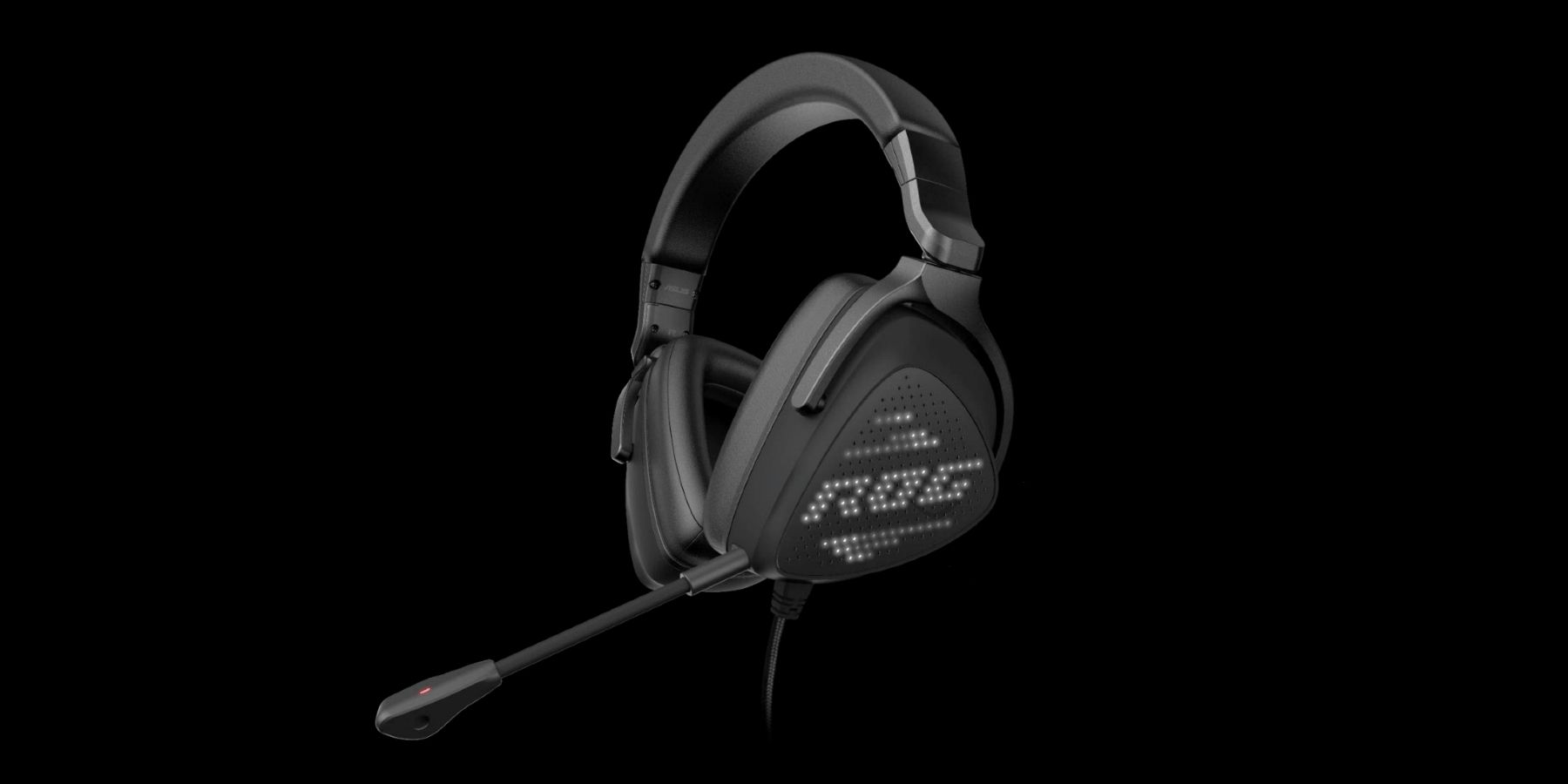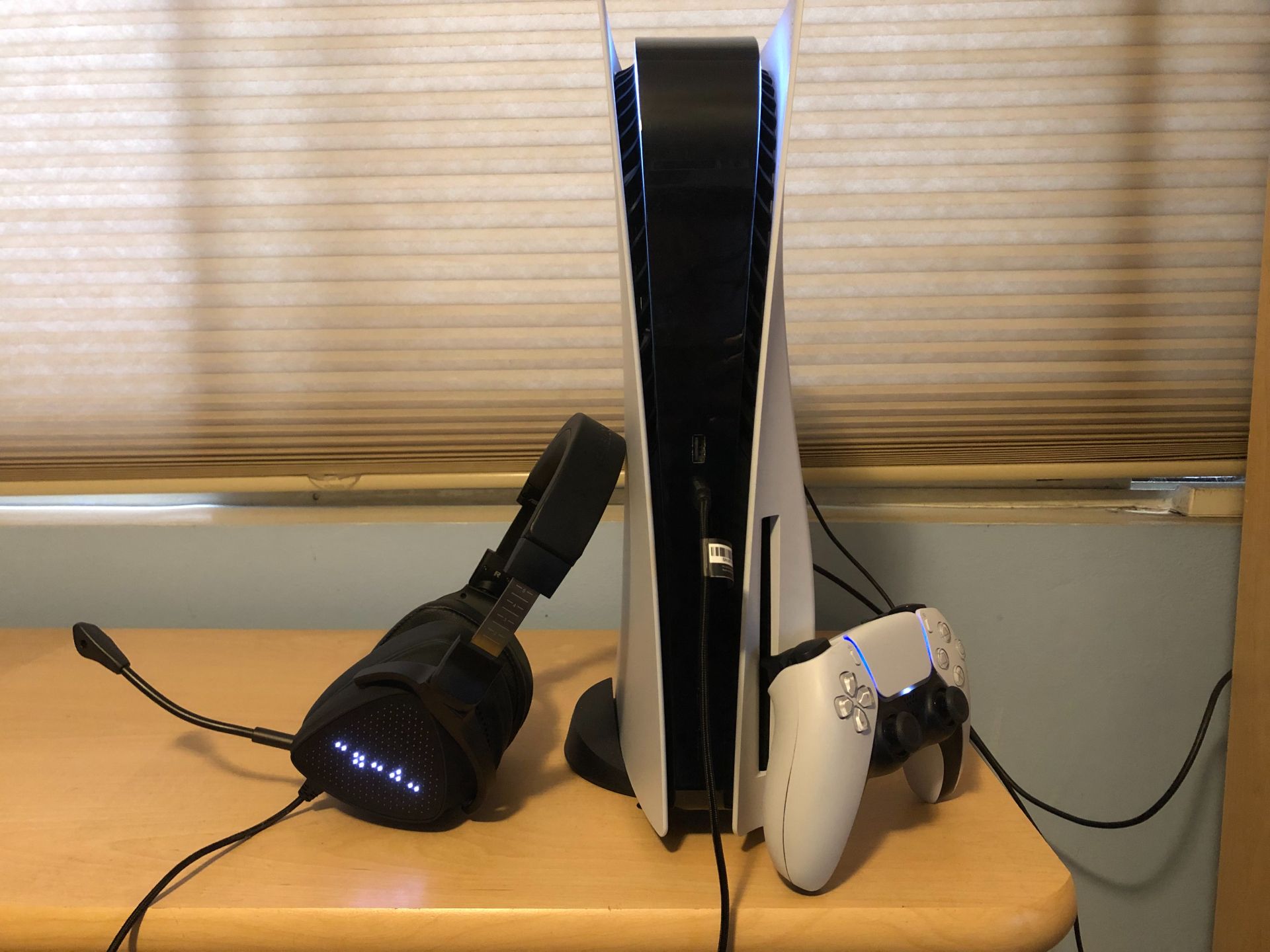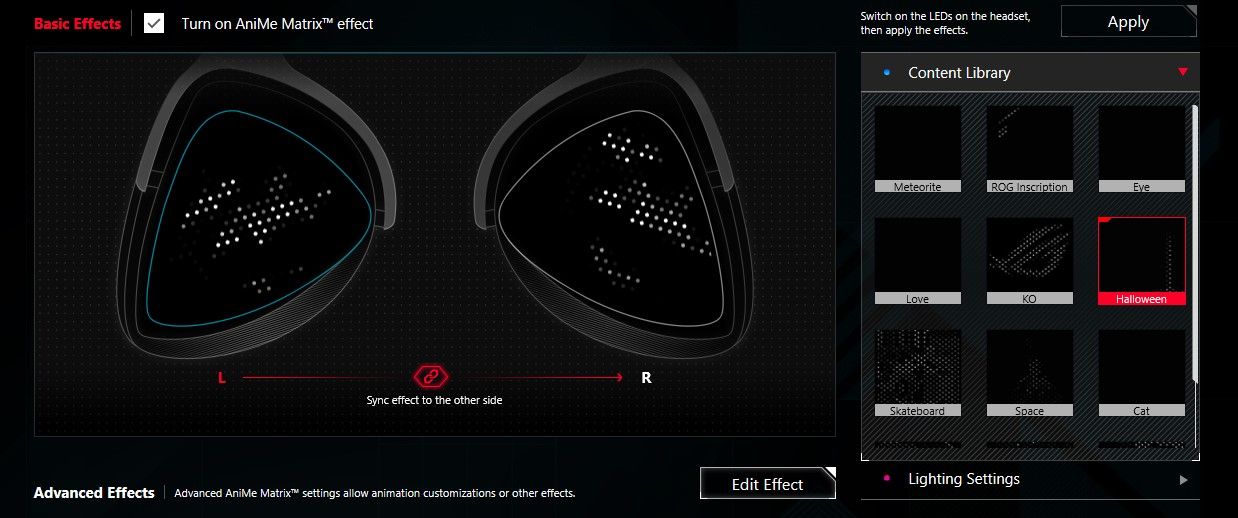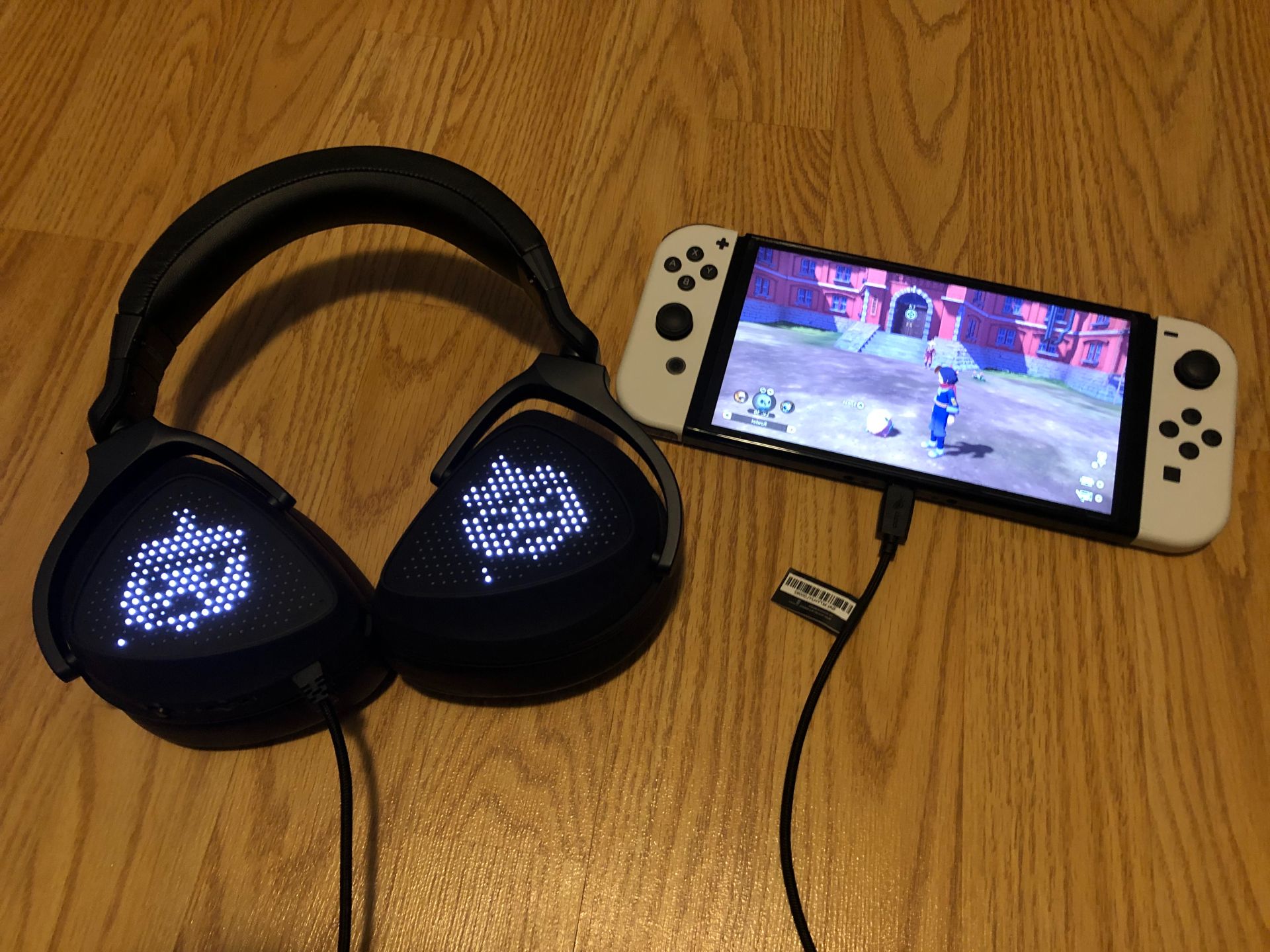Video game and movie sound design is often discussed in regard to the horror genre. Atmosphere is key to acclaimed horror franchises like Resident Evil, Silent Hill, and Dead Space, but it's just as important to nail auditory cues in genres like shooters where fans seek different experiences out of each weapon. The presence of remixes to Pokemon soundtracks and others on YouTube also points to audience interest in great auditory experiences, so headsets like the ASUS ROG Delta S Animate have their work cut out for them.
The Taiwanese manufacturer's Republic of Gamers (ROG) brand covers a wide breadth of products, from bog-standard laptops and peripheral headsets to mobile devices like the ASUS ROG Gaming Phone line. A major selling point for this particular headset, beyond its mini-LED displays on each ear, is its wired compatibility with consoles including the PlayStation 5 and Nintendo Switch alongside PCs and smartphones. However, even if the Delta S Animate shines brightest when used as a console headset, its versatility in terms of form and function leaves a lot to be desired.
The ROG Delta S Animate comes with a 1.5 meter USB-C cable directly attached to the headset, and is packaged with a meter-long USB-C to USB adaptor that makes it easy for users to find a port on their consoles or custom gaming PCs. It also comes with two ear cushions to swap at will; a "fast-cooling protein leather" set by default and an extra fabric set for those who prefer something softer. Their advertised D-shaped design is just small enough to make hooking them around one's ears cumbersome at times, which could leave them hanging a bit loose, but when secured they serve a noise-canceling purpose well.
However, the actual sound quality isn't always great. ASUS points to its built-in ESS 9281 Quad DAC device as something meant to provide clearer sound for low, mid, high, and ultra-high frequencies, as well as facilitate high signal-to-noise ratios for first-person shooters. The manufacturer's Armoury Crate software even offers a host of customization options for one's audio in- and output, from adding reverb effects and virtual surround sound to a number of "sound optimization" settings that automatically adjust bass boost, compressor, and voice clarity levels.
These settings are designed with gaming genres like racing, RPGs, and first-person shooters in mind, and there are others tailored to music, movies, and chatting. Yet it's hard to really tell the difference when swapping between settings during games like Halo Infinite on PC, in which a "flat" sound optimization arguably sounds better than the FPS mode. Testing the virtual surround sound with Armoury Crate's designated option also struggles to differentiate back-left and back-right, though the rest do as intended.
Arguably the biggest problem with using the ROG Delta S Animate on PC is a tinny quality to the sound regardless of what settings are active; apparent in gaming, listening to YouTube videos, and doing voice calls on Discord alike. It feels as though one has a slight layer of fog around them at all times, though considering the headset quality elsewhere it's hard to say whether this is the result of some bug in the Armoury Crate system. ASUS' software had repeat error messages when trying to connect the device, and functions like 'advanced effects' for the LEDs falsely claimed they were not compatible for a few weeks after connecting the headset. Meanwhile, settings like Reverb being turned on and off create a noticeable change.
Taking advantage of the LED animation program likely won't sell a ton of prospective buyers, anyhow. There are 12 default animations available through the AniMe Matrix on Armoury Crate when using the Delta S Animate, ranging from ROG brand advertisements to basic Halloween and heart effects, as well as more "complicated" animations like someone riding a skateboard or playing soccer.
Though it's easy to swap between these designs and make each ear display something different, what really holds this feature back is that white is the only color option. If people are investing in LED peripherals for their gaming endeavors, they're likely after the kind of fully customizable RGB displays offered by products like the SteelSeries Rival 5 mouse. Being able to edit and animate one's own effects is a decent gimmick, but having just one color hampers things - especially when the array of lights on each earpiece display laughable facsimilies of the complex, shadowed animations playing on Armoury Crate's previews. Setting a luminance level for the effects through AniMe also has no visible impact on the device.
With that in mind, users may be better switching their headset displays to showcase the soundwaves coming through its attachable microphone; one with no external sound guard but internal features like noise cancelation that do their job well. Switching between AniMe Matrix displays, soundwave displays, and no lights are one of the few tactile functions on the headset itself, the other being a volume control wheel that users oddly have to thrust forward to lower their volume and back to raise it.
Many of these issues are less pronounced on console. The Nintendo Switch sounds particularly crisp for older games like Paper Mario on the Switch Online's N64 library and new releases like Pokemon Legends: Arceus. PlayStation 5 compatibility is also solid, right down to pulling in sound effects like Aloy's focus activating in Horizon Zero Dawn that would otherwise play through the DualSense controller. Streaming to platforms like Twitch is also doable with the Delta S Animate's microphone, and players can swap their input between the mics on their headset and DualSense where desired.
Yet it isn't the end-all, be-all device for console gaming thanks to one design choice: the Delta S Animate is fully wired with no wireless option. Because the USB-C and A ports are only compatible with the PlayStation 5 console and not DualSense Controller, it's not a particularly feasible option for those who set their device next to their TV across the living room. On Switch, this wired connection also takes up the port one may be using to charge, making it a more useful accessory on the go than at home.
Because the Nintendo Switch added Bluetooth audio connectivity in September 2021, and the PS5 has wireless functionality built-in, it's easy to see that there are better headset options for both devices that won't conflict with their place in a media set-up. Still, the ASUS ROG Delta S Animate provides its best results for console gaming, where it's unhampered by potential issues with PC software. On PC, sound quality and LED effects leave much to be desired, especially for its $200 price tag, but for those looking to wear their streaming names during play sessions this headset will fill a particular niche.
The ASUS ROG Delta S Animate is available now for $200. Game Rant was provided a unit for this review.




